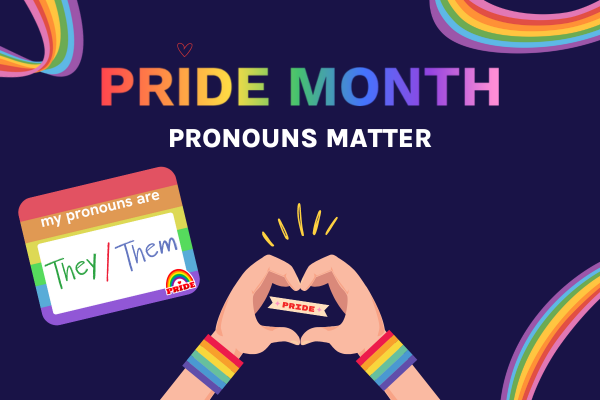About
Pronouns matter: Creating a safe and respectful environment for all
- Home
- About
- Latest news
- Pronouns matter: Creating a safe and respectful environment for all

28 June 2024
Pronouns are words used to refer to a person's gender. They are integral to our identities and how we express ourselves. Using pronouns correctly is key to communicating inclusively and respectfully.
At Austin Health we want our staff to bring their whole selves to work and to feel safe and empowered in doing so. As we continue working towards creating an inclusive environment for all, let’s talk about the importance of understanding and using appropriate pronouns.
Pronouns are grouped into ‘gendered’ (he, she) or ‘gender-neutral’ (they, them) categories. The pronouns a person uses can be different to the sex assigned to them at birth. We share pronouns because we want to avoid assuming someone's pronouns based on factors like appearance.
Using the correct pronouns which align with a person’s gender identity is a fundamental aspect of acknowledging, affirming, and respecting their gender identity.
How can you ask someone what their pronouns are?
Asking for someone's pronouns can be done respectfully and simply. Here are a few approaches:
Directly: "Hi, my name is [your name], and I use [your pronouns] pronouns. What are your pronouns?"
In a group setting: During introductions or if you are presenting, and if you feel comfortable doing so, introduce yourself with your pronouns. This normalises the practice, helps bring awareness and shows that you support your gender diverse colleagues.
Including pronouns in your bio and signature, and wear the badge: By adding your pronouns in your email signature or social media bio, you create an inclusive environment and encourage others to share theirs. Wearing a pronoun badge or rainbow flag indicates to LGBTIQA+ people that you are a safe provider. It is not mandatory to do so but these are a few ways to show you understand the importance of pronouns.
What do these pronouns mean?
Pronouns can signify various gender identities beyond the traditional binary framework. Below are some commonly used pronouns along with examples. Please note this is not an exhaustive list. Always ask people what pronouns they use.
he/him: used by those who identify as male. "He is going to the store. I’ll go with him. That book is his."
she/her: used by those who identify as female. "She is reading a book. I’ll talk to her later. That pen is hers."
they/them: used by people who identify as non-binary, genderqueer, or prefer not to be associated with a specific gender. "They are coming to the party. I’ll meet them there. That house is theirs."
she/they: used by individuals who are comfortable with both she/her and they/them pronouns, reflecting a fluid or non-binary gender identity. "She is an engineer. They are also a skilled artist. That project is hers."
he/they: used by individuals who are comfortable with both he/him and they/them pronouns, reflecting a fluid or non-binary gender identity. "He enjoys hiking. They are passionate about conservation. That backpack is his."
ze/zir: A set of gender-neutral pronouns used by some non-binary individuals. "Ze is an artist. I admire zir work. That painting is zirs."
xe/xem: Another set of gender-neutral pronouns used by some non-binary individuals. "Xe loves to travel. I’ll join xem on the trip. That car is xyrs."
What if I make a mistake and use the wrong pronouns?
‘Misgendering’ is a term used to describe the use of incorrect pronouns about or towards a person. It can happen as an accident or by mistake, and that's okay.
The important thing to remember is to apologise briefly and correct your mistake. Don’t over apologise, or explain how bad you feel, or say how hard it is for you to get it right. Doing so could make the person you misgendered feel even more uncomfortable, or worse, feel pressured to say ‘it’s okay’ even when it’s not.
Try to avoid making the same mistake again and do not give up – keep trying to get it right. Repeated mistakes could be perceived as a lack of respect and could be distressing for someone.
Understanding and using the correct pronouns is an essential step in creating an inclusive and respectful environment. By doing so, we acknowledge and affirm the identities of those around us, and foster a community of inclusivity, acceptance and understanding.


